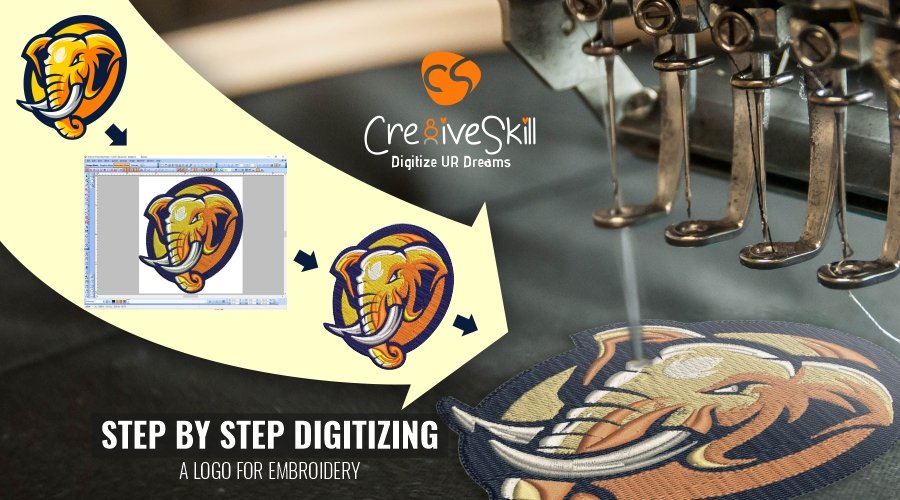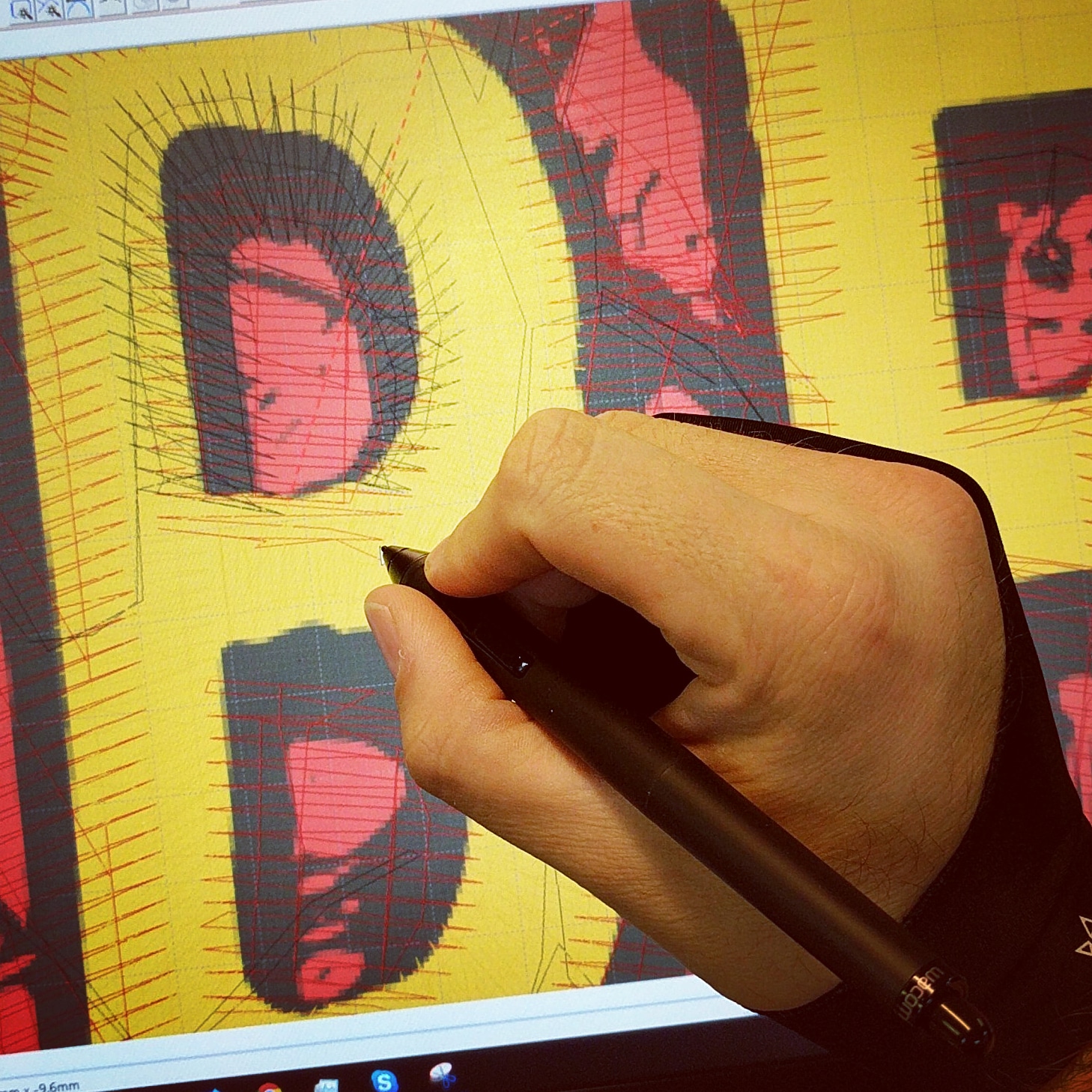Simplifying the Art of Embroidery Digitizing: Step-by-Step Overview
As modern technology proceeds to development, the digitization process has actually come to be extra obtainable, enabling enthusiasts to bring their intricate designs to life with ease. In this guide, we will certainly unravel the complexities of needlework digitizing, damaging down each step systematically to simplify the procedure and encourage both newbies and seasoned embroiderers alike.
Understanding Embroidery Digitizing Software
Needlework digitizing software program works as an important device for changing detailed layouts into electronic layouts suitable with needlework machines, helping with exact sewing and customization. This specialized software application enables individuals to import various picture data formats, such as JPG or PNG, and convert them right into embroidery machine-readable formats like DST, EXP, or PES - Digitizing for Embroidery. By using features like stitch modifying, rug choices, and thread color selection, digitizing software makes it possible for individuals to regulate every element of the design procedure
Additionally, advanced embroidery digitizing software program offers devices for producing complicated layouts, changing stitch thickness, and incorporating detailed details. Individuals can likewise sneak peek the style prior to stitching it out, making certain precision and decreasing errors. Additionally, several software application supply automatic functions that help improve the digitizing process, conserving time and initiative.
Recognizing the abilities of embroidery digitizing software application is necessary for accomplishing high-grade outcomes in needlework projects. By grasping this device, needlework fanatics and professionals can release their imagination and bring elaborate designs to life with precision and performance.

Picking the Right Layout Data
After acquainting yourself with the abilities of embroidery digitizing software application, the next essential action in the process is selecting the right design declare your project. Digitizing for Embroidery. When choosing a style declare needlework digitizing, it's important to consider the intricacy of the design, the size of the end product, and the kind of fabric you will be dealing with
For complex designs with fine details, a high-resolution photo or vector documents is advised to make certain that the needlework equipment can precisely replicate the layout. In addition, the dimension of the last product plays a considerable duty in selecting the ideal layout data. Bigger designs may require higher resolution files to maintain clearness and sharpness.
In addition, the kind of textile you will certainly be stitching on affects the selection of style documents. Various textiles might need adjustments in the layout data to guarantee that the stitches are properly aligned and the design shows up as planned. By meticulously picking the appropriate layout documents based upon these factors, you can establish on your own up for a successful embroidery digitizing process.
Digitizing Tools and Strategies
Using specialized software and accuracy methods, digitizing devices are crucial in changing detailed designs into embroidery-ready documents. Embroidery digitizing software, such as Wilcom, Hatch, or Embrilliance, supplies the required platform to convert artwork into stitch data. These programs use functions like stitch additional info modifying, rug choices, and lettering devices to make certain the layout translates effortlessly onto fabric.
Among the essential strategies in digitizing is creating a clear course for the embroidery machine to follow. This involves digitizing each element of the style with precision, establishing stitch kinds, thickness, and directions. By making use of tools like digitizing tablets or software-specific plugins, embroiderers can accomplish a high degree of accuracy in their digitized styles.
In addition, mastering the art of rug stitching is vital for producing high quality embroidery. Underlay sewing stabilizes the textile and produces a foundation for the design, ensuring that the last item is both visually enticing and resilient. By comprehending these digitizing tools and techniques, embroiderers can boost their craft and bring complex designs to life with accuracy and effectiveness.
Personalizing Stitch Types and Instructions
Having established a structure in digitizing tools and techniques, a vital aspect beforehand needlework craftsmanship depends on customizing stitch kinds and directions with accuracy and function. The selection of stitch kinds can dramatically affect the overall look and structure of the embroidered style. Satin stitches, understood for their smooth and glossy surface, work well for producing borders and text. On the various other hand, fill stitches are optimal for covering bigger locations successfully. By strategically combining these stitch types, embroiderers can achieve depth and measurement in their layouts.
Additionally, the direction of stitches plays a critical function in boosting the visual allure of the final needlework. Varying stitch instructions can add structure, emphasize certain elements, and develop aesthetic rate of interest. For example, transforming the angle of stitches can replicate motion or natural patterns like hair or feathers. By try out various stitch angles and patterns, embroiderers can bring their designs to life with amazing detail and complexity. Mastering the art of tailoring stitch kinds and instructions encourages embroiderers to release their creative thinking and raise the top quality of their work.
Testing and Refining Your Digitized Design
To ensure the accuracy and high quality of your digitized layout, extensive screening and improvement are necessary steps in the embroidery digitizing procedure. Once you have actually finished the digitization of your layout, it is crucial to check it before waging the actual needlework. Examining allows you to recognize any prospective concerns such as thread breaks, stitch thickness problems, or style distortions that may influence the outcome.

After screening, it is vital to improve your digitized style based upon the feedback from the examination sew-out. This might entail tweaking stitch setups, readjusting thickness, or making changes to the general design to accomplish the preferred outcome. By repeating through testing and refinement, you can fine-tune your digitized style to perfection before moving on with the actual embroidery process.
Conclusion
In verdict, understanding the art of needlework digitizing calls for a comprehensive understanding of the software application, selecting the right layout documents, utilizing digitizing tools and techniques, tailoring stitch kinds and directions, and screening and refining the digitized layout. By complying with these steps, embroiderers can streamline the digitizing process and develop top quality embroidered designs with precision and efficiency.